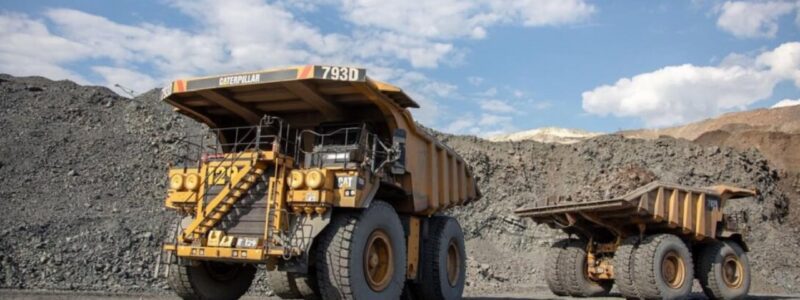
Mining company Ferrexpo plc with assets in Ukraine published its debut climate change report and announced an updated carbon reduction target of 50% by 2030 for Group 1 and 2 emissions.
The company recalled that it had previously pledged to reduce these emissions (Group 1 emissions from its own operations, mainly from combustion of fuel and gas, and Group 2 emissions from purchased electricity, steam, and heat) by 30% by 2030, but had already achieved this goal.
As the report specifies, in 2021, Group 1 emissions increased by 11% (hereafter per ton of production), while Group 2 emissions decreased by 40%, and overall emissions decreased by 16%.
Since baseline 2019, Group 1 emissions have fallen 1% and Group 2 emissions have fallen 54%, for a total drop of 30%.
Ferrexpo points out that diesel fuel accounted for 40% of Group 1 emissions in 2021, which could be reduced by the introduction of battery electric dump trucks as well as the use of trolley technology on uphill runs.
The company noted that it achieved significant reductions in Group 2 emissions last year by replacing 18% of natural gas in pelletizers with biofuels (sunflower husks), building a trial 5 MW solar power plant and a strategy of selective green power purchases.
In addition, in the climate change report, Ferrexpo also presented new emission reduction targets for Group 3 (third-party transport for product delivery and use in metallurgy) – 10% by 2030 and 50% by 2050.
The company indicates that the main reductions in this category could be achieved by switching to metallized (DR) pellets for direct reduction of iron, which uses electric arc furnace steelmaking methods without coal.
In absolute terms, according to the report, the goal is to reduce CO2 emissions of all three groups from 2.2 million tons in 2019 to 1.6 million tons in 2025 and 2030, 1 million tons in 2035, 0.5 million tons in 2040 and 0.2 million tons in 2050.
Translated into a ton of production, this would correspond to a reduction in emissions from 205 kg in 2019 to 107 kg in 2025, 68 kg in 2030, 44 kg in 2035, 22 kg in 2040 and 8 kg in 2050.
In the climate change report, Ferrexpo detailed a number of climate change risks and opportunities related to its business, particularly related to the introduction of CBAM, and a potential decarbonization pathway to achieve net zero iron ore pellet production by 2050.
“Our first climate change report is the culmination of an initial phase of work detailing climate change topics, such as risks and opportunities associated with climate change, as well as a special study of a potential decarbonization path for the group: achieving net zero production through 2050,” Ferrexpo CEO Jim North is quoted in the document.
As reported, in October 2021, Ferrexpo began working with Ricardo plc (Britain), which helped prepare this report, as part of its decarbonization plans.
Ferrеxpo owns 100% of Poltava GOK, 100% of Yeristovsky GOK and 99.9% of Belanovsky GOK. Last year, the company produced 11.2 million tons of pellets, becoming the world’s third largest exporter.